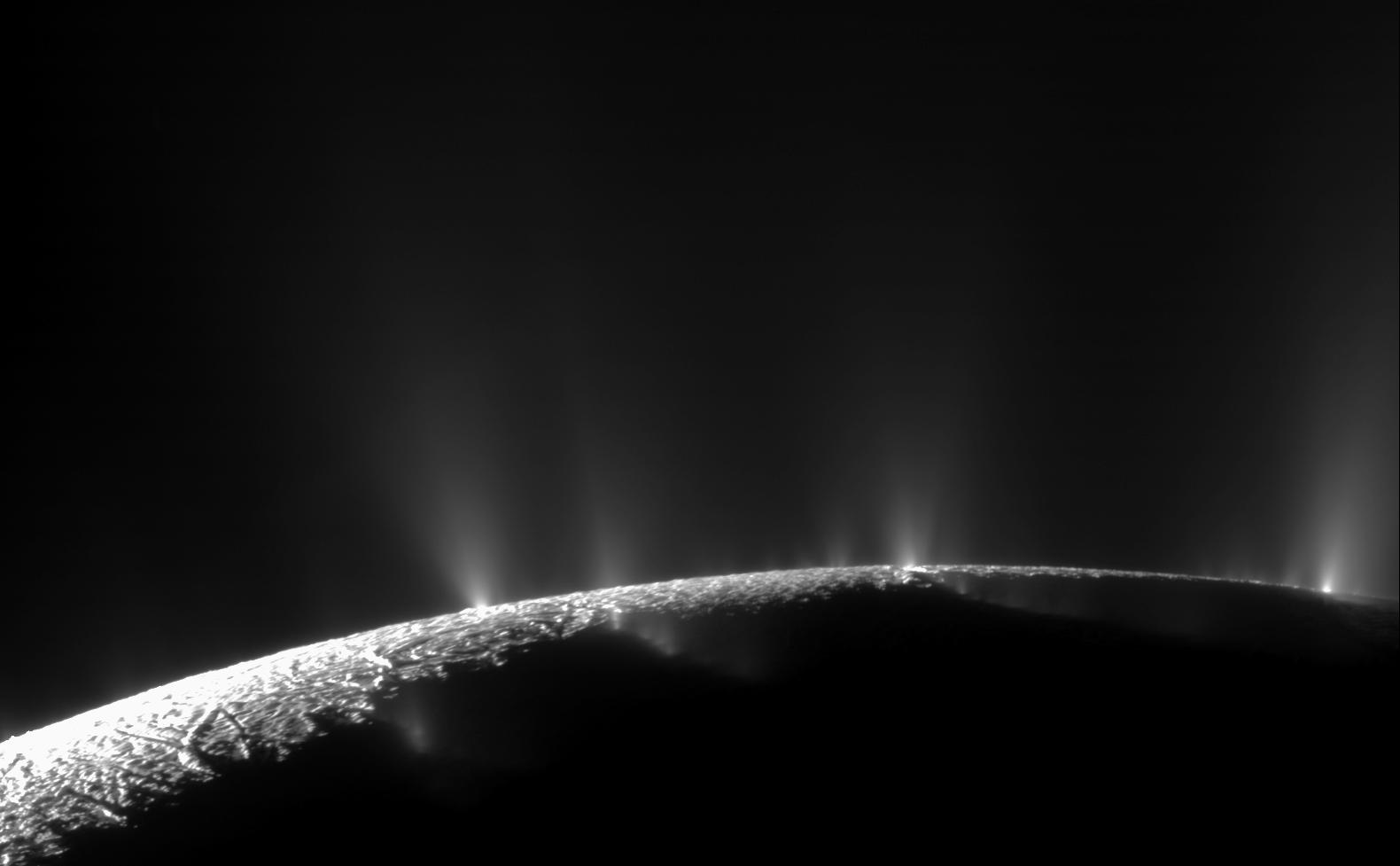3 min read
The most recent spacecraft telemetry was acquired on Dec. 14 from the Deep Space Network tracking complex at Canberra, Australia. The Cassini spacecraft is in an excellent state of health and all subsystems are operating normally. Information on the present position and speed of the Cassini spacecraft may be found on the "Present Position" page at: http://saturn.jpl.nasa.gov/mission/presentposition/.
Wednesday, Dec. 8 (DOY 342)
Orbit Trim Maneuver (OTM) #270 was performed today. This was an apoapsis maneuver setting up for the Enceladus 13 (E-13) encounter on Dec. 21. The Reaction Control Subsystem (RCS) burn began at 3:30 PM PST. Telemetry immediately after the maneuver showed a burn duration of 9.5 seconds, giving a delta-V of 0.016 m/s. All subsystems reported nominal performance after the maneuver.
Last week, a Science Forum was held to discuss the S68 background sequence. S68 is Cassini's first sequence in the new Solstice Mission sequence development process to run for ten weeks in execution. Prime mission and Equinox mission sequences typically were built for around five weeks in execution.
Thursday, Dec. 9 (DOY 343)
This week in science, the spacecraft was in the apoapsis portion of the orbit, giving the instruments an opportunity to perform long observations while observational geometry was changing rather slowly. Science observations included three observations completed by the Cosmic Dust Analyzer (CDA) as part of the campaign to study interstellar dust. The Magnetometer (MAG) performed a 12 hour rolling activity to collect data on the Saturnian magnetic field, and the Visual and Infrared Mapping Spectrometer (VIMS) performed a 23.5 hour observation of the E and G rings at a solar phase angle of 80 degrees.
Friday, Dec. 10 (DOY 344)
In the last week, 93 Imaging Science (ISS) images and 23 VIMS cubes were generated and distributed. Since Jan. 2004, when Saturn Approach Science began, 237,022 ISS images and 113,059 VIMS cubes have been received.
Monday, Dec. 13 (DOY 347)
Real time commands to normalize the Attitude and Articulation Control Subsystem (AACS) A8.8.0, Cosmic Dust Analyzer (CDA) V10.0.4, and Composite Infrared Spectrometer (CIRS) v6 flight software loads began today and will be completed on Wednesday, Dec. 15.
Port 3 products were due today as part of the S67 Sequence Implementation Process (SIP). The products will be merged and sent out to the flight team for review.
Tuesday, Dec. 14 (DOY 348)
A press briefing called "Ice Volcanoes and Hot Plasma Explosions: Highlights from NASA's Cassini Mission to Saturn," took place at the American Geophysical Union meeting in San Francisco today. It covered two topics: the finding of a possible ice volcano, or cryovolcano, on Saturn's moon Titan and an analysis of hot plasma "explosions" around Saturn that are linked to mysterious, periodic magnetic field and radio signals from the planet. They were accompanied by a press release (http://saturn.jpl.nasa.gov/news/newsreleases/newsrelease20101214/) about the cryovolcano and a feature story about the plasma clouds (http://saturn.jpl.nasa.gov/news/cassinifeatures/feature20101214/).
An encounter strategy meeting was held today to cover the period between Dec. 21 and Jan. 11, Enceladus flyby E-13 and Rhea encounter R-3, and maneuvers 272-274.







